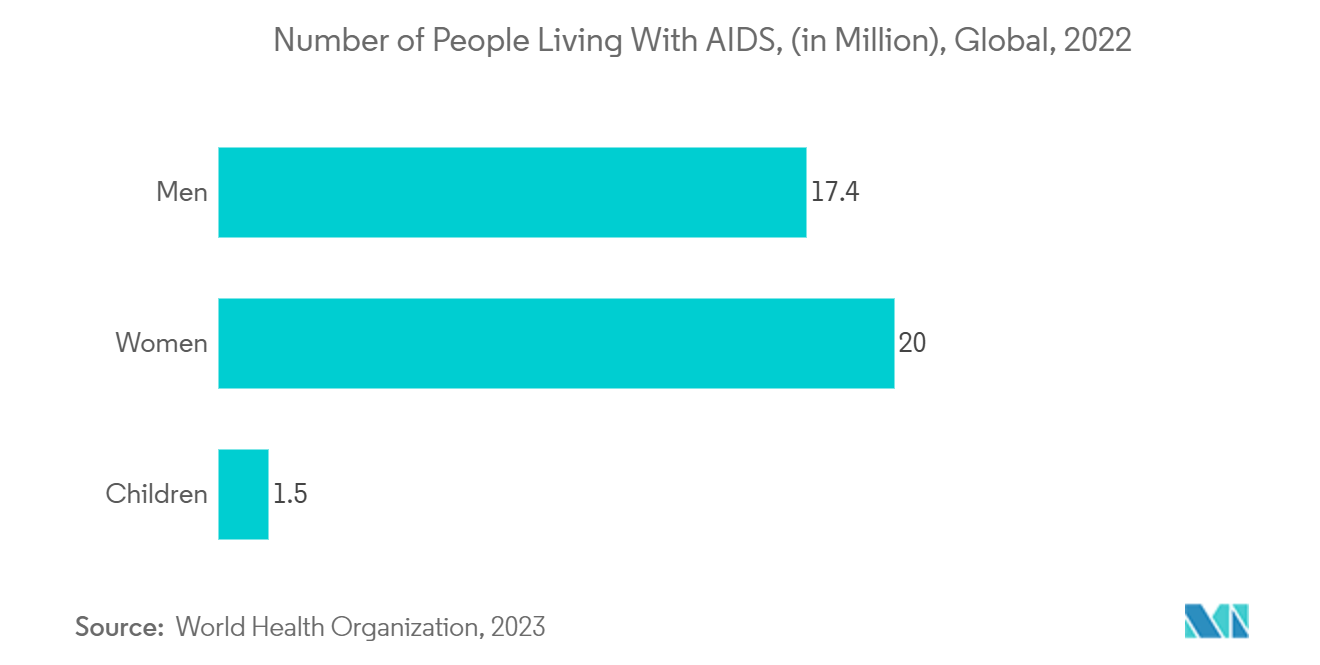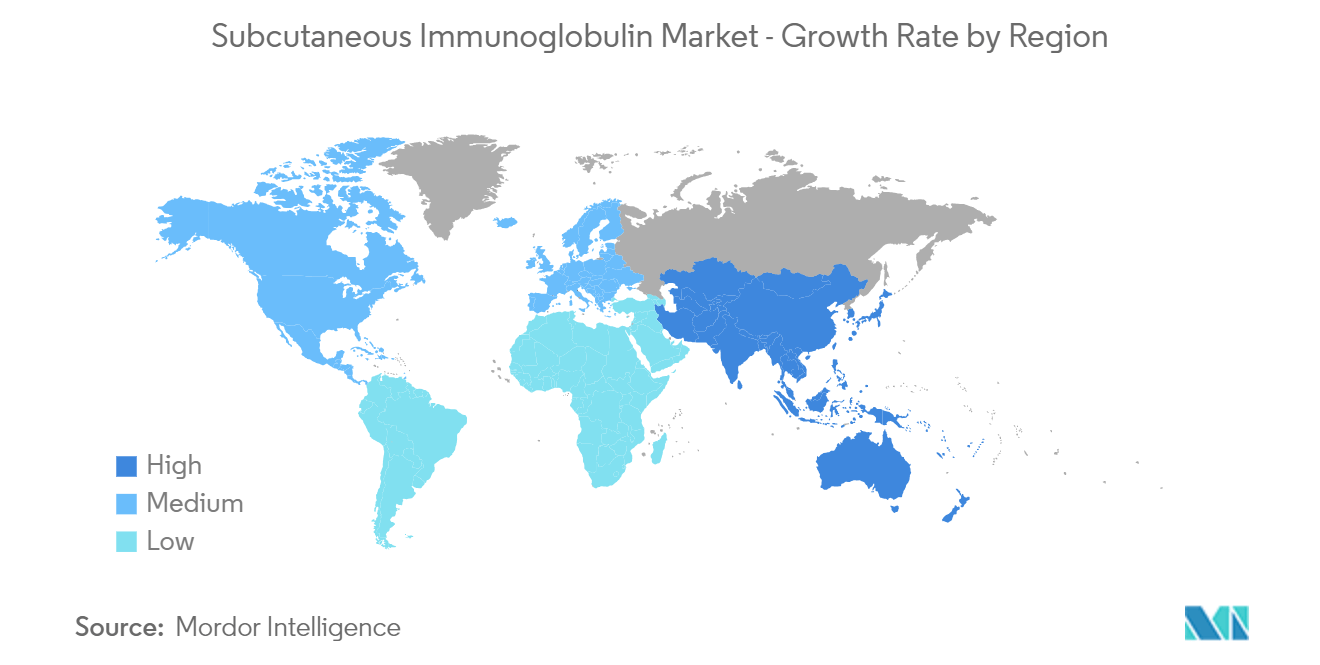Market Trends of Subcutaneous Immunoglobulin Industry
Secondary Immunodeficiency Diseases are Expected to Witness a Strong Growth During the Forecast Period
AIDS, cancers of the immune system like leukemia, and immune-complex diseases like viral hepatitis are some of the most common examples of secondary immunodeficiency diseases. With the growing burden of the above-mentioned diseases, the segment is believed to witness strong growth in the coming years.
According to the data updated by WHO in 2023, it was observed that there were around 39.0 million people around the globe with AIDS in 2022. Also, there were approximately 1.3 million new AIDS cases were identified globally in 2022. Among the infected people, 1.5 million were children, which is creating a significant burden on the global healthcare industry. Hence, with the high prevalence of secondary immunodeficiency diseases such as AIDS, the segment is expected to grow significantly during the forecast period.
Also, the increasing approvals of drug candidates for secondary immunodeficiency are boosting segment growth. For instance, in January 2022, Octapharma announced that the indication for cutaquig, a human immunoglobulin for subcutaneous administration, was expanded in the European Union (EU), providing more flexible treatment options to a far wider range of patients with secondary immunodeficiency.
The new Global Health Sector Strategies (GHSS) on HIV, viral hepatitis, and sexually transmitted infections, 2022-2030, are seen as an opportunity to refocus global efforts, speed up the response, and recommit to the elimination of viral hepatitis by 2030, according to participants in the third World Hepatitis Summit. Hence, with the increasing focus of various countries on eliminating such diseases, there is expected to be a growing demand for immunoglobulin, which is believed to propel the segment growth during the forecast period.

North America is Expected to Dominate the Market During the Forecast Period
North America is expected to dominate the overall subcutaneous immunoglobulin market during the forecast period. The market growth is due to factors such as the presence of key players, the high prevalence of immunodeficiency disease patients, the increasing geriatric population in the region, and the established healthcare infrastructure.
As per the data from the American Cancer Society Report 2022, there were an estimated 1.9 million new cancer cases in the United States in 2022. Among those, breast cancer and cancers of the genitals were expected to witness the highest numbers. The report further stated that the burden of cancer in the United States is increasing rapidly, which is providing opportunities to healthcare companies operating in the therapeutics business. Hence, with the high burden of cancer in the United States, the market for subcutaneous immunoglobulin is expected to witness strong growth in the coming years.
Additionally, Canada has been facing a huge burden of cancer in recent years. As per the data from the Government of Canada published in June 2022, it was projected that the number of people living with cancer would reach 233,900 in 2022. Diagnosis for lung, breast, colorectal, and prostate cancers was anticipated to continue being the highest in Canada.
Several key developments are occurring in the United States that are fueling market growth. For instance, in January 2023, KORU Medical Systems Inc., one of the leading medical technology companies operating in the drug delivery systems business, announced a development agreement with a pharmaceutical manufacturer of subcutaneous immunoglobulin therapy (SCIg) to develop and seek regulatory approval of the Freedom Infusion System with a SCIg prefilled syringe.
Therefore, the above statistics indicate that with the rising burden of cancers in North American countries, there will be a growing demand for immunoglobulin, which is expected to boost the market growth in the coming years.


